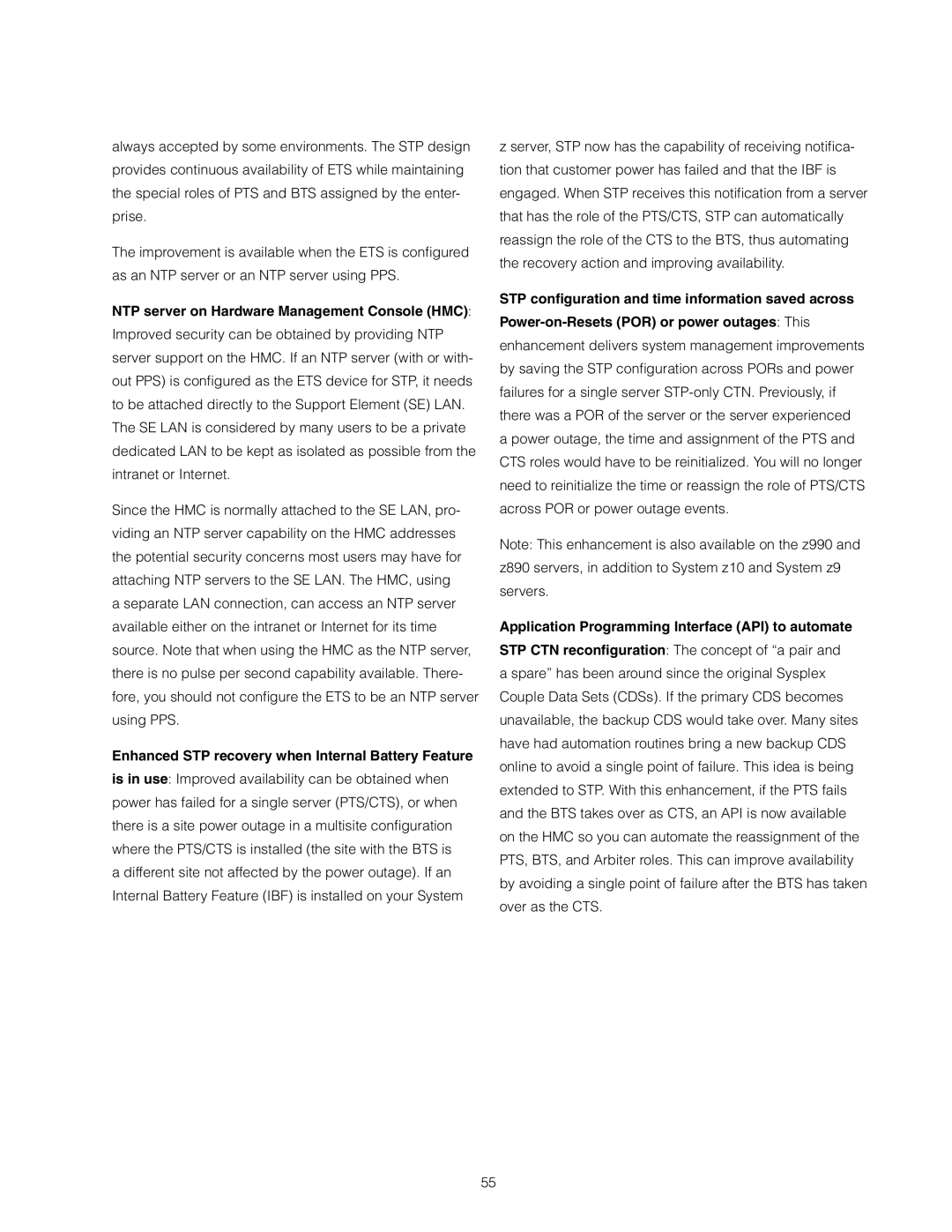always accepted by some environments. The STP design provides continuous availability of ETS while maintaining the special roles of PTS and BTS assigned by the enter- prise.
The improvement is available when the ETS is confi gured as an NTP server or an NTP server using PPS.
NTP server on Hardware Management Console (HMC):
Improved security can be obtained by providing NTP server support on the HMC. If an NTP server (with or with- out PPS) is confi gured as the ETS device for STP, it needs to be attached directly to the Support Element (SE) LAN. The SE LAN is considered by many users to be a private dedicated LAN to be kept as isolated as possible from the intranet or Internet.
Since the HMC is normally attached to the SE LAN, pro- viding an NTP server capability on the HMC addresses the potential security concerns most users may have for attaching NTP servers to the SE LAN. The HMC, using a separate LAN connection, can access an NTP server available either on the intranet or Internet for its time source. Note that when using the HMC as the NTP server, there is no pulse per second capability available. There- fore, you should not confi gure the ETS to be an NTP server using PPS.
Enhanced STP recovery when Internal Battery Feature
is in use: Improved availability can be obtained when power has failed for a single server (PTS/CTS), or when there is a site power outage in a multisite confi guration where the PTS/CTS is installed (the site with the BTS is a different site not affected by the power outage). If an Internal Battery Feature (IBF) is installed on your System
z server, STP now has the capability of receiving notifi ca- tion that customer power has failed and that the IBF is engaged. When STP receives this notifi cation from a server that has the role of the PTS/CTS, STP can automatically reassign the role of the CTS to the BTS, thus automating the recovery action and improving availability.
STP configuration and time information saved across
enhancement delivers system management improvements by saving the STP confi guration across PORs and power failures for a single server
Note: This enhancement is also available on the z990 and z890 servers, in addition to System z10 and System z9 servers.
Application Programming Interface (API) to automate
STP CTN reconfiguration: The concept of “a pair and a spare” has been around since the original Sysplex Couple Data Sets (CDSs). If the primary CDS becomes unavailable, the backup CDS would take over. Many sites have had automation routines bring a new backup CDS online to avoid a single point of failure. This idea is being extended to STP. With this enhancement, if the PTS fails and the BTS takes over as CTS, an API is now available on the HMC so you can automate the reassignment of the PTS, BTS, and Arbiter roles. This can improve availability by avoiding a single point of failure after the BTS has taken over as the CTS.
55
